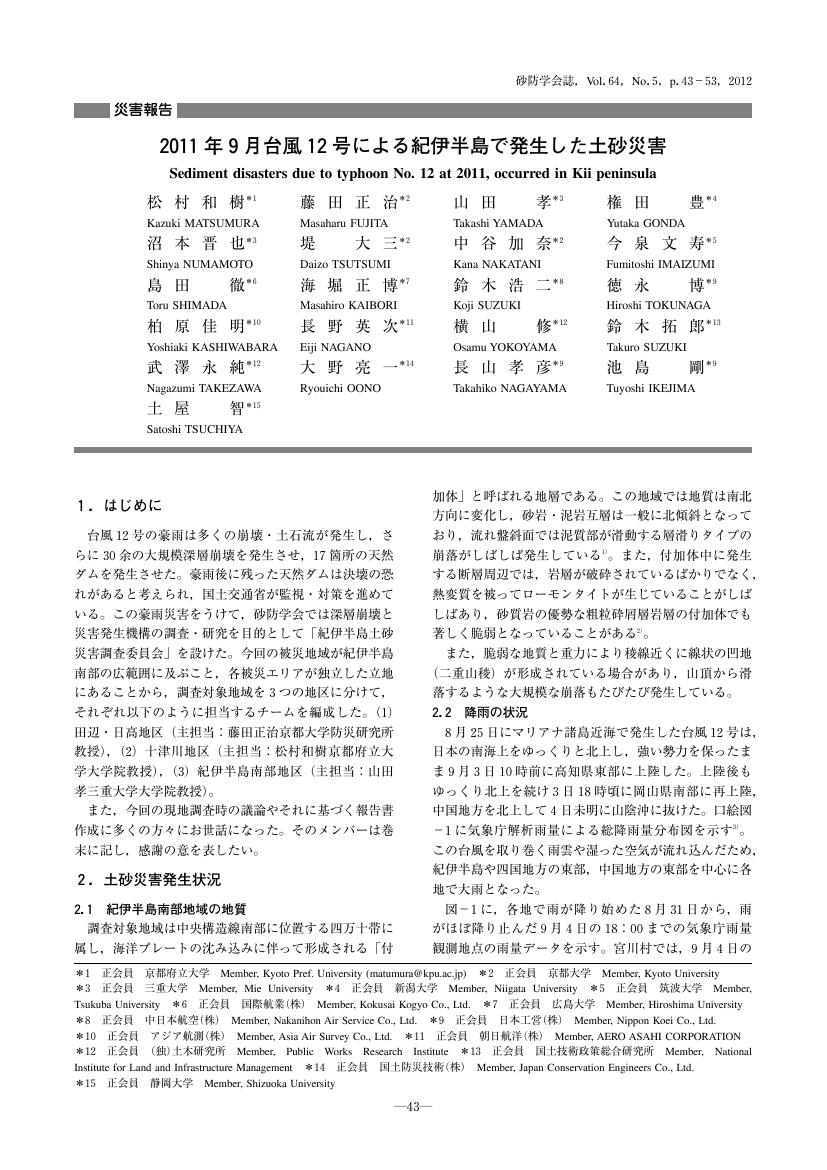1 0 0 0 土石流の構成則に基づいた粒子法モデルの構築と堆積過程への適用
- 著者
- 鈴木 拓郎 堀田 紀文
- 出版者
- 公益社団法人 砂防学会
- 雑誌
- 砂防学会誌 (ISSN:02868385)
- 巻号頁・発行日
- vol.68, no.1, pp.13-24, 2015
<p>The shallow water equations are generally used for numerical simulation of debris flows. In this method, the distributions of the flow velocity <i>u </i>and sediment concentration <i>c </i>are vertically averaged. Therefore, the calculation may be inaccurate when the upper and lower layers have different flow directions, as with countergradient flows. We propose a numerical simulation method for calculating the vertical distributions of <i>u </i>and <i>c </i>in debris flows. Our method is based on the moving particle semi-implicit (MPS) method, which was originally used for incompressible viscous fluid flows with free surfaces. Some modifications are necessary to adapt the method for debris flows. We introduce the constitutive equations of Egashira et al. to the MPS method. In Egashira's equations, debris flows are treated as a continuum. Thus, the proportion of gravel in a debris flow is expressed using the variable <i>c</i>. Similarly, each particle has an associated <i>c </i>value in our modified MPS method. In Egashira's sediment concentration equations, the equilibrium vertical distribution of <i>c </i>is obtained by integrating the rate of change of <i>c </i>in the vertical direction from the riverbed. In our method, <i>c </i>values spread among nearby particles, in order to reduce the difference between the equilibrium rate of change <i>c </i>and the actual rate of change of <i>c</i>. Numerical simulations of debris flow are performed. In the equilibrium condition, there is good agreement with the vertical distributions of <i>u </i>and <i>c </i>and those derived from the constitutive equations. In the condition where the riverbed gradient becomes less steep, there is good agreement with experimental results with a very short relaxation time, including those involving the formation of a convex upward deposition shape in the initial deposition process. Results for the initial deposition process are not produced with existing simulation methods that are based on the assumption of local equilibrium of average sediment concentration. However, simulations with a very short relaxation time show that local equilibrium is established as well as in existing methods. This indicates that the assumption of local equilibrium of sediment concentration is correct, and that because it evaluates the local equilibrium of each particle, our model can yield good results.</p>
